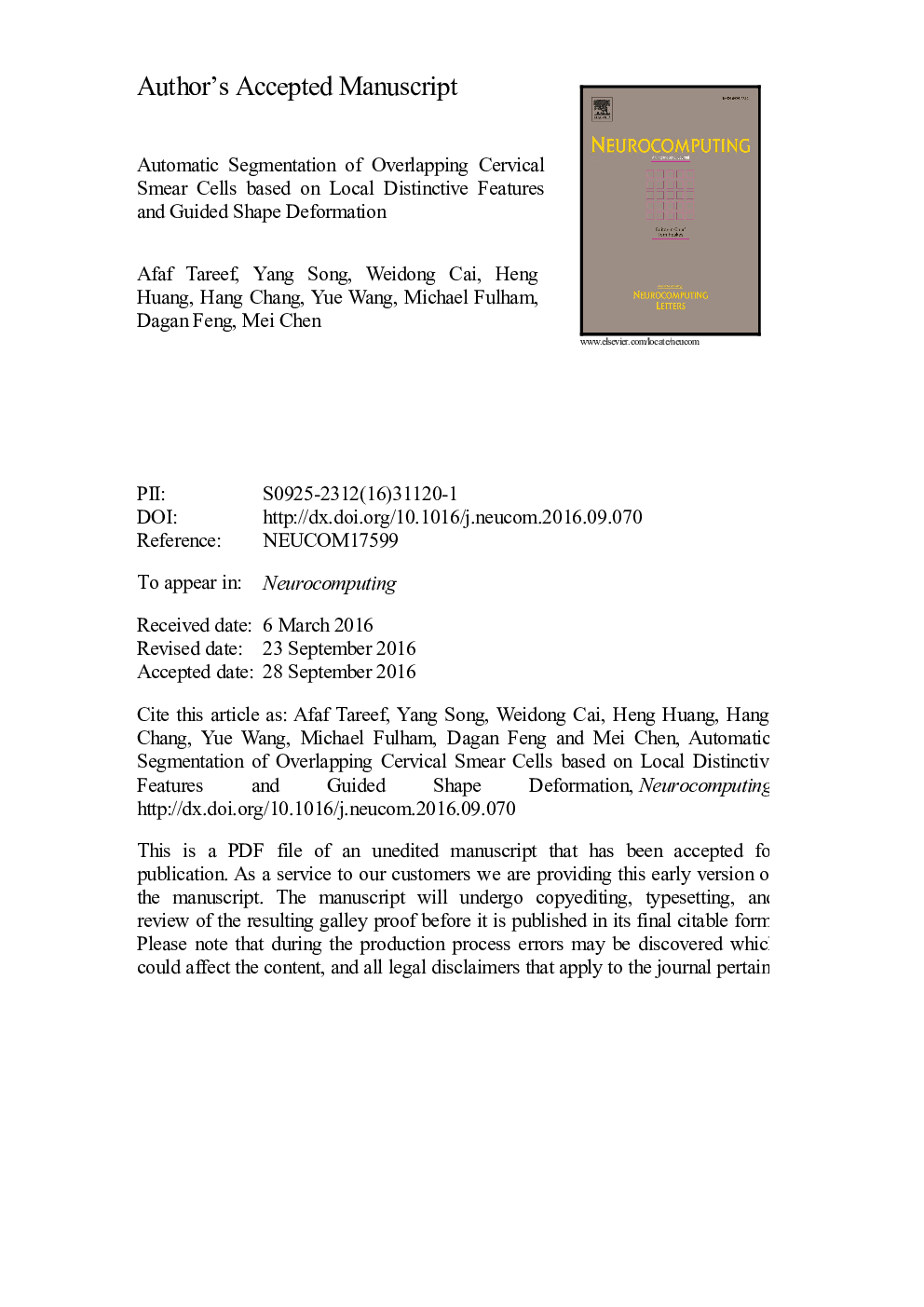| Article ID | Journal | Published Year | Pages | File Type |
|---|---|---|---|---|
| 4948023 | Neurocomputing | 2017 | 40 Pages |
Abstract
Automated segmentation of cells from cervical smears poses great challenge to biomedical image analysis because of the noisy and complex background, poor cytoplasmic contrast and the presence of fuzzy and overlapping cells. In this paper, we propose an automated segmentation method for the nucleus and cytoplasm in a cluster of cervical cells based on distinctive local features and guided sparse shape deformation. Our proposed approach is performed in two stages: segmentation of nuclei and cellular clusters, and segmentation of overlapping cytoplasm. In the first stage, a set of local discriminative shape and appearance cues of image superpixels is incorporated and classified by the Support Vector Machine (SVM) to segment the image into nuclei, cellular clusters, and background. In the second stage, a robust shape deformation framework is proposed, based on Sparse Coding (SC) theory and guided by representative shape features, to construct the cytoplasmic shape of each overlapping cell. Then, the obtained shape is refined by the Distance Regularized Level Set Evolution (DRLSE) model. We evaluated our approach using the ISBI 2014 challenge dataset, which has 135 synthetic cell images for a total of 810 cells. Our results show that our approach outperformed existing approaches in segmenting overlapping cells and obtaining accurate nuclear boundaries.
Related Topics
Physical Sciences and Engineering
Computer Science
Artificial Intelligence
Authors
Afaf Tareef, Yang Song, Weidong Cai, Heng Huang, Hang Chang, Yue Wang, Michael Fulham, Dagan Feng, Mei Chen,
